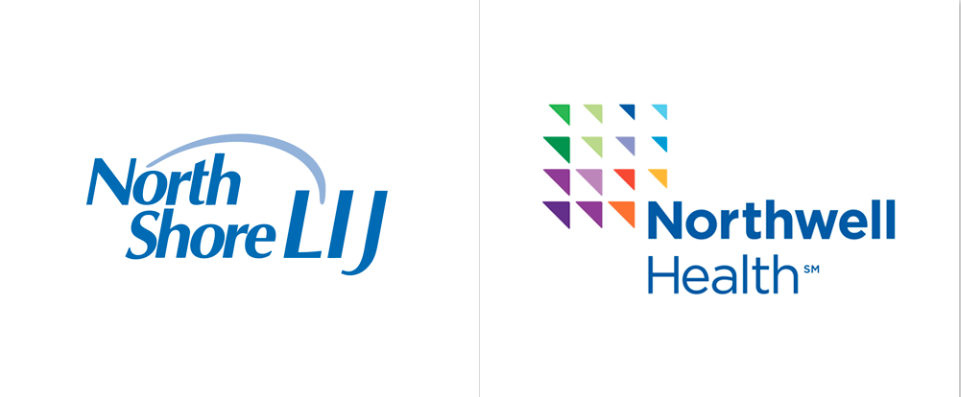What’s Behind All of the Hospital and Health System Rebrands?

The healthcare industry has been under fire for rising costs. It’s currently outpacing national GDP growth and will make up one-fifth of our nation's total spending in the next few years. Amidst this, healthcare providers are spending millions on … rebrands?
Recently, major national healthcare players based in the Boston area have undergone or announced rebrands. In September, Dana Farber and its charity branch The Jimmy Fund debuted new visual identities. This summer, Partners Healthcare, the parent company for renowned facilities Massachusetts General Hospital and Brigham & Women’s Hospital, announced that it was embarking on a rebranding project.
And, they aren’t the only ones. Within the region, and across the nation, major healthcare providers have undergone brand transformations including new visual identities and new names. For North-Shore-LIJ Health System, it was an eight-year journey to become Northwell Health. Similarly, Adventist Health System recently rebranded to become AdventHealth; its CEO described the transformative moment for the organization. After the merger of Beth Israel Deaconess Medical Center and Lahey Health, the second-largest provider in Massachusetts became Beth Israel Lahey Health. Countless other large healthcare organizations have embarked on a similar rebranding journey.
A change in landscape calls for a change in name
Healthcare providers aren’t just rebranding because they’re bored of a logo or color palette. A rebrand within a hospital or health system is an enormous and costly lift, especially when you consider the seemingly countless touchpoints a brand has in healthcare, particularly in health systems with numerous separate facilities. So, why are all of these healthcare providers renaming and reskinning themselves?
Because in today’s environment, patients shop for healthcare like they shop for any other product or service. Entrenched with technology and a wealth of information at their fingertips, patients have become consumers that compare their options and take in more information to make educated decisions about where to receive care. As a result, patient leakage is a problem for providers trying to keep patients from spreading their care around systems based on the highest value care—the perfect blend of high quality and low cost.
Additionally, the rise of healthcare mergers and acquisitions has necessitated that independent systems and facilities make conscious decisions about how to unite brands without alienating their own patients. These expensive rebranding efforts are an attempt to attract and retain patients within their system.
Three motivation factors for a rebrand
Amidst a shifting landscape, healthcare providers still must identify their organization’s primary reasons for a makeover. As Brooke Hynes, Tufts Medical Center’s vice president of marketing and communications put it, “Business strategy must drive brand strategy.”
1. Expanding Scope
Healthcare rebrands often come as a result of broadening scope. Traditionally, the majority of hospitals have been stand-alone centers that served particular regions, and the names reflected that. In today’s environment, medical tourism to the U.S. has increased as have rural care facility closures, meaning healthcare providers now have far wider geographical reach than previously.
One of the most notable rebrands in recent years was Northwell Health. Formerly named North Shore-Long Island Jewish, the system opted for a shorter, less descriptive name in 2015.
“The old name localized us as being too Long Island-focused, when the bulk of our organization has expanded beyond Long Island,” said the CEO, Michael Dowling.

The name also invoked a specific religious community, while the new name removed any such connection. NYU Lutheran Medical Center similarly dropped its religious connection in 2017.
With patient populations expanding to cover larger regions and a variety of communities, healthcare providers are opting for more inclusive brands with broader reach.
The lesson: As your business grows and evolves, consider how your brand is – or isn’t – still serving you.
2. Dropping Names
As healthcare brands merge and gobble up others, sometimes the brands are just too strong to lose entirely. That’s what is happening with Partners.
In announcing its rebrand, the new Partners CEO Dr. Anne Klibanski said, “Our founding members, Massachusetts General Hospital and Brigham and Women’s Hospital, have powerful brand names.” And, she’s right. MGH is consistently ranked highly on the U.S. News Best Hospitals list coming in at #2 for the 2019-2020 rankings. Brigham is #13 and ranks even higher for specialty care.
With such emphasis on the existing names, a Boston healthcare reporter suspects we can see a mix-matched version in the Partners rebrand, like “Mass General Brigham Health.”
Is it just us, or are healthcare organizations starting to sound like law firms? Just look at the recent Beth Israel Deaconess and Lahey Health merger.

Case in point.
The lesson: When you’ve established brand equity, use it or lose it.
3. Unifying Friends
Distinct from name dropping, some providers are visually unifying and connecting related brands. The new Dana Farber and Jimmy Fund rebrands were confined to the logo and visual identity. Retaining their individual names, the new logos mimic each other in shape and color, solidifying the relationship between the two entities both founded by Dr. Sidney Farber.

But, not only do the brands connect to each other, they also connect to the third organization in a famous Boston trio – the Red Sox. In the new Jimmy Fund logo, the little boy the fund is named after dons a baseball cap to signify its status as the Red Sox organization’s official charity of choice.
Ascension went a similar route with rebranding all 2,600 of its care sites (still in progress). While most facilities kept their names, all facilities adopted the same visual marking, colors, and fonts of the new Ascension logo to unify the sites as one big family of brands.
The lesson: A rebrand doesn’t always mean a new name; sometimes it’s just a new look.
Though the game may change between industries, the rules of branding still apply. Whether it be a hospital, a healthtech company, a law firm, or a construction company, the reasons why a rebrand may be beneficial remain the same, and every company should periodically stop and take inventory of where their business is and where they want it to go.
